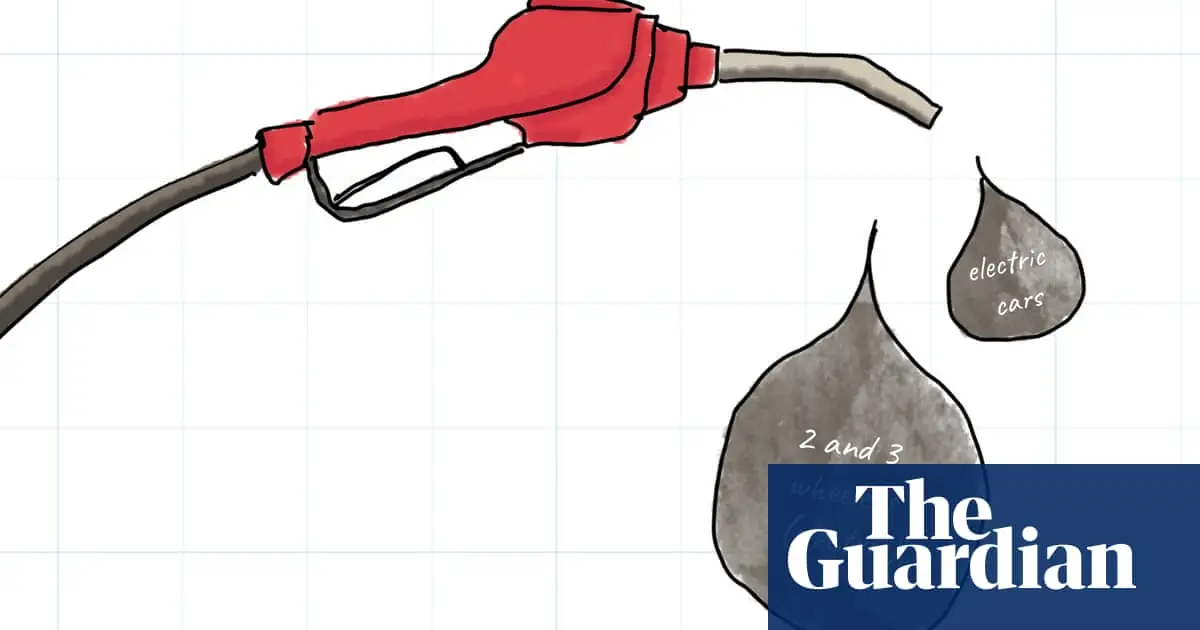This is why zoning reform (i.e. allowing higher density for better walkability/bikeability) is the single most important policy change to fight global warming.
I live in an area where everything is roughly within a 10 minute’s walk. Groceries, pharmacy, universities, hospitals, etc. It is flipping awesome. And the light rail can quickly take you to other universities, jobs and (further out) the airport.
deleted by creator
From an ecological viewpoint such zoning reforms have merits, but in the way we have done it so far, I question the social merits of such policies. The society must be about more than stacking people on top of eachother.
From time to time we’ve seen very one-sided policies pushed (often with economical focus) and several years down the line we realise the issues of such policies. We can’t afford that at this point, we need to find policies that adress the full trifecta of areas to find our way forward sustainably.
You seem to be under several misconceptions:
-
The force of these polices are applied in exactly the opposite of how you think they are. Zoning reform does not force “stacking people on top of each other;” it allows them the freedom to choose to live more closely together. Single-family exclusionary zoning is, in fact, the policy that curtails freedom the most by forcing everyone to live in only one type of housing whether they like it or not. Any property owner is perfectly free to build a single-family house in an area zoned to allow high density if they want; it’s the single-family zoned areas where their property rights are infringed.
-
Low-density areas are objectively harmful to live in. Physical health is destroyed by the forced imposition of a sedentary lifestyle due to lack of walkability, and mental health is destroyed by the prohibition of convenient access to third places (i.e. forcing them to be miles away instead of interspersed within neighborhoods). To be very clear: this is not an opinion; this is a fact informed by studies showing that people’s health and happiness are measurably worse in car-dependent places.
“Allows them freedom”? From my viewpoint, that is straight up newspeak. Which is also a point to be made, our respective frames of reference is so diverse I’m hard pressed to think we would ever use the same language to describe any form of housing. Only in America is walkability a problem in low density areas. Presuming your definition of “low density” isnt rural, of course. And if we are rural, I have a hard time seeing how that can be defined as a sedentary lifestyle. Going for a walk is not usually a problem in those settings, either.
-
The more of this kind of small vehicle traffic we get the better supported it is. Safer traffic patterns, dedicated lanes, repair stores and vendors, etc.
I think you’re also seeing some political organizing to that front, too. Cambridge MA has a biking advocacy group putting pressure on government to put in more biking infrastructure.
Big car might have a stranglehold on big government but people paying attention to small local elections can make a big difference
Constituency building is absolutely crucial to all of this and often underlooked. It’s a virtuous cycle. If you build useful and good infrastructure, people will use it, and the more people who use it the more people who will vote for it and demand it. It’s a big part of how car-centric urban design grew so fast and became so sticky in North America, and that same constituency-building is the best way to take streets back for people.
Seeing people on bikes makes people think about biking. Even without the bike paths, being out and about your city on a bike is doing your part to build just a little more constituency for it. On top of it being good for your wallet, the climate, and likely your health.
Now if only I could get the average local bike shop worker to stop being such a colossal gatekeeping prick about ebikes…
Yeah, Cambridge, MA has done a lot. The last job I had there was on a newly renovated building and per city regs it had to have a full bike room and showers. I thought it was oversized but obviously welcome, but by summer it was over-full. Though the space could be much better used.
That summer at one intersection I was stuck in congestion - bike congestion. There were 30 commuters ahead of me at the light on the way home - a light that 6 or 7 cars got through per cycle.
It’s far from perfect, but just cross the river to Boston and it’s a different world, even though Boston has probably improved more than most US cities too.
I suspect that’s true if only because most us cities haven’t improved at all
Boston is putting in a bunch of bike lanes but most of them aren’t protected
That said, the North end has a wonderful separated bike lane. Same as the seaport
Except for a stretch by long wharf I can just about bike the entire way using separated bike lanes if I don’t mind going out of my way a little bit
but most of them aren’t protected
That said, the North end has a wonderful separated bike lane.
Well there I part ways with a lot of local pro-cycling opinion. Separated lanes are only superior under tightly controlled design, and most around here are far from that and give an entirely false sense of security. They’re often hidden behind parked cars and every intersection is highly stressful minefield of interactions with drivers completely unaware of your presence. That Commercial St path in the North end is not separated at all from pedestrians and is (belligerently) considered by most joggers to be a their path, and pedestrians don’t think of looking before lurching into it unpredictably. Even the stretches where the pedestrian area is 15-20ft wide, the majority of joggers use the bike path, and where it’s crossed by side streets and parking entrances, cars will just blow through your path.
The Seaport Blvd “separated lane” is f’ing lethal. The Somerville Beacon St lane made things significantly worse IMO. I commuted that regularly before when there was just a big wide lane rideable without any drama or difficulty. After the new lane I only rode it 30 or so times and with the near misses I experienced or witnessed mean I avoid that route eastbound if at all possible. Now it’s a hidden lane behind parked cars where motor traffic often doesn’t notice cyclists and blows right across your path.
Separated lanes are the ideal when they’re done right, following best practices, e.g. from the Dutch, which means not on roads with many crossing intersections, and at intersections the lane needs to be carefully managed with a significant period pulled out clearly beside the motor traffic lane before the crossing.
After a dooring 18 years ago I’ve been very careful passing parked cars in general, but a false sense of security in a segregated lane, and a brief failure to recognize the danger, means I was doored again 3 months ago, from the left. Frankly it just confirmed what I’ve been feeling over the last few years about unsophisticated “separated lanes good” attitudes. A lane painted alongside traffic is often not inferior in reality, in my experience, even if (and sometimes because) it doesn’t make people feel so secure.
I just started biking again so I might be a bit naive
Hopefully things keep improving. I’m definitely in favor of Dutch style transportation
Keep in mind, there’s a lot more that goes into the wildly superior Dutch infrastructure than just which streets get bike lanes along them. Roads are also fundamentally deferential to pedestrian and bike traffic there. As in, crossings are elevated above the road, which has a surprisingly effective impact on the culture and behaviors around modes.
The other issue with bike infrastructure in MA is also the reason we see pockets of it done so well-- cities here have way more power than in other states. It’s a lot easier to get this stuff implemented here with purely local efforts than, say, in WI or wherever. We also just straight up generally love biking here. It’s still totally baffling to me how that fucking gremlin thought he could run for mayor of Somerville on an explicitly antibiking platform. I also wish we could get our shit together in Medford on this, but my city is so god damned broke, I don’t think we could afford the paint for slapping down lines.
Keep in mind, there’s a lot more that goes into the wildly superior Dutch infrastructure than just which streets get bike lanes along them
I thought that was largely my point.
Ebikes won’t replace a car for a lot of people, but they are often well-suited for shorter trips and the “last kilometre” – the distance between home and the nearest public transport.
The last kilometre point is important too. Making sure there is secure bike parking and/or allowing bikes on public transport makes the whole thing more convenient and requires less planning in cases where you want to make mixed mode trips.
deleted by creator
There’s a plethora of affordable ebikes available in the US. The Lectric Lite is $800, while the bigger and more utility oriented Lectric XP 3.0 is $1000. The Andsky S700 and Ride1up Portola compete with it at the same price.
You’re comparing the price of a high end cargo ebike which can do large grocery trips with a low end motorcycle that cannot carry remotely as much. I fail to see how even a high end cargo ebike which costs less than most cars is a status symbol or priced for “silicon valley dorks”.
If you want to find an ebike to simply take you from point A to point B, they can easily be found for nearly the price of a regular bicycle.
Some aren’t too bad. Juiced Bikes and Radpower bikes can be had (on sale, early spring) for as little as $1,100. Aventon sells e-road bikes for $1,000 on sale. Granted, you are gonna have to buy stuff like fenders for some. And right to repair for ebikes is pretty abysmal compared to normal bikes, brand dependent. But Radpower and Aventon have physical bike repair shops and partner shops, and Juiced has pretty standard components and a decent support window even outside of warranty (stuff like batteries being standard across almost the entire lineup, standard wheels, spokes, etc)
If we had stronger right to repair laws, and more cities and towns put in protected bike lanes, you really can travel 20+ miles pretty comfortably.
My abound was $1600 and has a load capacity of 440lbs, I try to always use it for errands within 5-10 miles or so. To be fair, adding racks and such was another few hundred.
Here in the UK, you can literally buy a decent used car for the price of a new ebike. With prices like this, and poor bike infrastructure, they will never be seen as anything other than a curiousity.
Here’s the thing though. I arrived at the conclusion that buying both a car and an ebike is cheaper than buying a car alone, provided the bike replaces the car for the bulk of your trips. You save enormous amounts in fuel and maintenance. The amount of electricity you consume is a rounding error on your monthly bill while you need to budget for fuel when driving, and automobile maintenance costs are easily 10x higher than for a bike. And last but not least, you can go for a long time without replacing your car since you put so little mileage on it, and when you do go looking for a replacement, you can lower the bar in looking for a bargain. Since it’s something you will only drive sporadically, it doesn’t have to be great.
Why not find the best budget ebike you can and the best budget car you can and compare the sticker prices? Not to mention gas and maintenance.
Having poor infrastructure right now does not mean that they are permanently a “curiosity”.
This is how it is in the Canada too.
Y’all are NOT thinking about the incredible way cars are a fiery pit that you throw money into. You don’t just buy the car and then use it, it costs money to use a car every damn second you are using it, not to mention the stupid things depreciate value like crazy.
A bicycle takes a laughable amount of maintenance, honestly there just isn’t that much to go wrong, it isn’t even remotely close how much more money, headaches and time it takes to maintain a car vs. an ebike.
People keep stealing my bikes and I don’t like it
I imagine that is super frustrating but remember, if you buy a used bicycle for cheap, someone could steal your bicycle practically every month and it will still be cheaper and less of a headache than owning and using a car.
While that may be true, the original post stated that you could buy a used car for the cost of a new ebike. It didn’t mention the additional costs of ownership, hence we can leave them out of the qualifier. It’s not unreasonable to say that the purchase of a used car could be similar in price to that of the purchase of a new ebike.
Most people are aware. They are also aware of dealing with inclement weather, especially in most of the UK where it rains a lot. The weather here in Scotland is miserable most of the year. Cold, wet, and windy. Many feel the extra cost is worth it. I’m not saying whether any of this is good or bad, I’m just pointing out the reality.
This is not true for Canada. You can buy an ebike for $2700CAD.
Yeah, and you could buy a used car for that amount…just like what OP said
One of the reasons I stopped riding a bike is because I didn’t want to die in traffic. People can go on about how awesome bikes are but I really don’t want to die on the front of the grill of some careless lorry driver.
I love riding my bike, its the best way to commute, provided you go before rush hour
More than 95% of the two-wheelers are located in China, according to the IEA.
Wow! What is the situation over there? Is it that fewer people can afford a car and opt for ebikes, that the infrastructure is more bike-oriented, or are there some other factors at play?
They used to be an extremely bike heavy culture before cars too over, so maybe it’s just a return to old habits? China is also big on EVs too, so maybe they have just moved to electric in general.





